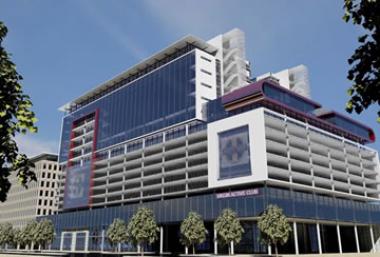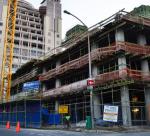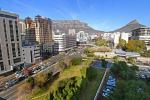Cape Town's city skyline to feature stunning additions
 An artist’s impression of Chris Barnard Hospital in Cape Town's Foreshore upon its completion. The new 249-bed hospital is expected to open in 2016.
An artist’s impression of Chris Barnard Hospital in Cape Town's Foreshore upon its completion. The new 249-bed hospital is expected to open in 2016.
Development planned for the Cape Town city centre, some of which is already under way, will profoundly change the look of the CBD and surrounding areas in the next few years.
Portside Tower, the city’s tallest building at 139m, is expected to be completed in April.
Christiaan Barnard Hospital will move from the city centre to a site next to the Cape Town International Convention Centre, on the Foreshore. The new 249-bed hospital is expected to open in 2016.
Kendall Keveney, Cape Town’s director of development facilitation, said there were plans to develop council- and province-owned property in partnership with investors.
“In District Six, 5500 housing units will go up,” said Keveney.
“At the Culembourg Quarter, 200000m² of development is planned, and approval has already been given for 25000m², which will include several highrise buildings.”
Western Cape public works MEC Robin Carlisle said the redevelopment of the Foreshore would strengthen the provincial economy and create jobs.
His proposal that the freeways be demolished was influenced by experiences of cities around the world and by the need to “reconnect” the CBD to the sea.
“Land reclamation and the freeways have cut us off from the sea,” said Carlisle.
He said doubling the size of the convention centre, which generates more than R400-million a year and which made a profit last year of R11-million, could create about 36000 jobs.
“Then we could bid to host big congresses like the Heart Congress, which is the biggest conference in the world,” said Carlisle.
Last year Transnet approved the construction of a passenger terminal for cruise ships and this, Carlisle said, would spur growth in tourism and related industries.
“We want to open up Heerengracht Street [by demolishing freeways] so that it flows into the passenger terminal,” said Carlisle.
University of Cape Town postgraduate architectural students have been roped in to make suggestions on the future of the city’s incomplete freeway, construction of which was abandoned in the 1970s when the money ran out.
Architect Neville Adler said creative ways had to be found to make the freeway benefit the city.
“I’m not one for demolition and doing away with infrastructure; they should rather try to turn it into an opportunity,” said Adler.
Bulelwa Makalima-Ngewana, Cape Town Partnership CEO, said developments on the Foreshore would integrate the CBD and the Waterfront.
“Plans include pedestrian and bike-friendly access and links to public transport routes,” she said.


















